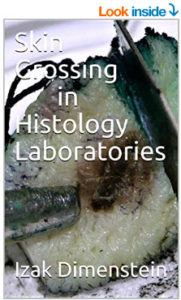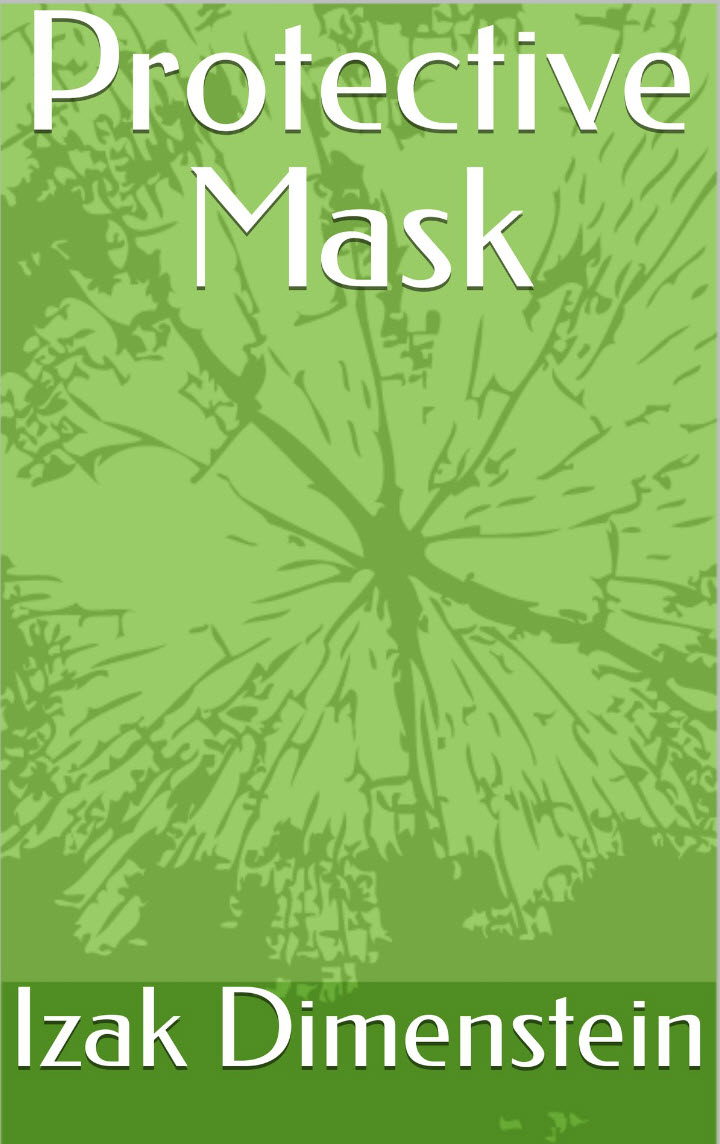
After working as a researcher (short time, PhD program on immunology), a clinical pathologist (some time), an anatomical pathologist (long time, around twenty years), and pathologists’ assistant (more than five years), I found my most productive niche as a grossing technologist at the Department of Pathology Loyola University Chicago Medical Center. Here I had an opportunity to summarize my pathology experience, formulate some principles of grossing technology, and propose some “inventions”, namely gadgets, which might be useful in practice. Actually, most of my “revelations” may already existed, but either there was no information published about them or they had been forgotten.
A fledgling sub-specialty emerges in the surgical pathology laboratory when grossing is assigned to laboratory workers, most often histotechnologists, who do not have systematic pathology education as well as the skills to perform this initial stage of processing, crucial to a pathologist’s diagnosis. Right or wrong, this is a fact of life. In my publications and workshops (Publications in the USA, see below), I have relentlessly promoted grossing technology as a sub-specialty that extends beyond specimen sampling techniques, but includes many aspects of the initial phase specimen processing before histotechnology begins per se.
New technologies have brought grossing technology, the initial stage of specimen processing, additional challenges from microdissection for molecular technology to standardization for Whole Slide Imaging (WSI) digital pathology. Adequate specimen preservation and appropriate orientation for optimal diagnostic results during sampling become especially important for modern and future anatomic pathology laboratories. This is a still-uncharted territory of grossing technology that requires attention and development.
The website opens opportunities to express my own views without sensing a reviewer’s disapproving eye . My web home is my castle as the old British might have said if they had known the Internet.
My site is my home on World Wide Web (www). My home on the Internet is idimenstein@hotmail.com
Welcome!

Publications in the USA
Publications on grossing technology and beyond
In Seth L. Haber’s column “Innovation in Pathology”: Handling bones and other calcified tissue – CAP TODAY September 2003; December 2003; March 2004.
Dimenstein IB: Baby Diaper Pad for Filtration Biopsies. The Journal of Histotechnology 2006; Vol 29, No. 3. P.204.
Dimenstein IB: Hard Pressed Cardboard for Bone Grossing Immobilization. AAPA Newsletter, 2007 Vol. XXXV No.4:25.
Dimenstein IB: Bone grossing techniques: helpful hints and procedures. Annals of Diagnostic Pathology 2008; 12:191-198.
Dimenstein IB: Root Cause Analysis of Specimen Misidentification in Surgical Pathology Accession and Grossing. LabMedicine 2008; 39: 497-502.
Dimenstein IB: Incision in a Foam Pad for Embedding Orientation. The Journal of Histotechnology 2008; 31: 141-142.
Dimenstein IB: Grossing biopsies: an introduction to general principles and techniques. Annals of Diagnostic Pathology2009; 13: 106-113.
Dimenstein IB: New Devices for Manual Embedding Orientation. The Journal of Histotechnology 2009; Vol. 32 (3): 123-125.
Dimenstein IB: A Pragmatic Approach to Formalin Safety in Anatomical Pathology. LabMedicine 2009 Vol. 40 (12):740-746.
Dimenstein IB: “The Grossing Histotechnologist in Surgical Pathology” (Two installments) Advance for Administrators of the Laboratory online edition 2010 May 10th and 20th.
Dimenstein IB: Sectionable cassette for embedding automation in surgical pathology. Annals of Diagnostic Pathology 2010; 14:100-106.
Dimenstein IB: Specialized Stations for Grossing Biopsies. The Cutting Edge Journal. AAPA 2011Vol.1. 1: 20-22.
Dimenstein IB: Gadgets for ‘Floaters’ prevention in the histopathology laboratory. The Journal of Histotechnology 2011; Vol. 34, 2: 88-90.
Dimenstein IB: Decalcification in surgical pathology. The Cutting Edge Journal. AAPA 2012. Vol. 2. 3: 21-23.
Dimenstein IB: Third-hand Immobilization in Gross Sectioning of Pathology Specimens. HistoLogic, June, 2013, 8-10.
Dimenstein IB: The concept of adjustable immobilization to aid grossing and facilitate uniform biopsy slices. Technical Note. 2013; Journal of Histotechnology; Vol. 36, Number 3:106-109.
Dimenstein IB: Grossing Histotechnologist Training. Guest Editorial. Journal of Histotechnology. 2015, Vol. 38, No. 2, pages 33-38.
Dimenstein IB: The complete prostate needle biopsy submission during grossing and embedding. Journal of Histotechnology, 2016, Volume 39, Issue 3, pp. 76-80.
Dimenstein IB: Embedding automation methods: perspective and prospects. Annals of Diagnostic Pathology 2019; 42:12-17.
Dimenstein IB: Grossing Technology Today and Tomorrow. Laboratory Medicine, Volume 51, Issue 4, July 2020, Pages 337–344. https://doi.org/10.1093/labmed/lmz081
Dimenstein IB: The road from cytotoxins to immunohistochemistry. Journal of Histotechnology. Published online: 10 Sep 2020 Download citation https://doi.org/10.1080/01478885.2020.1804234
Dimenstein IB Hybrid Autopsy Virology Laboratory Experimental Platform. J Infect Dis Epidemiol (2020) 6:180. doi.org/10.23937/2474-3658/1510180.
Dimenstein IB. (2021) The Concept of a Compound Autopsy Experimental Laboratory for SARS-CoV-2 Aerosolization Studies. International Journal of Clinical and Experimental Medicine Research, 5(2), 161-165. DOI: http://dx.doi.org/10.26855/ijcemr.2021.04.010
Dimenstein I. B., Churilov L. P. Alexander A. Bogomolet’s’ and his followers’ cytotoxins studies legacy. Clinical Pathophysiology, 2021 Volume 27, Issue 4. 2021
Books
Clifford M. Chapman & Izak B. Dimenstein. Dermatopathology Laboratory Techniques. 2016. CreateSpace Publication. ISBN-13: 978-1535366878. Amazon.com.
Dimenstein Izak. Grossing Bones: Principle, Techniques, and Instruments. 2017. CreateSpace Publication. ISBN-13:978-1548490799. Amazon.com.
Dimenstein Izak. Grossing Technology. A Guide for Biopsies and Small Specimens. 2018. CreateSpace Publication ISBN-13:978-1725672314. Amazon.com.
Dimenstein Izak. Skin Grossing in Histology Laboratories. 2020. CreateSpace Publication ISBN-13:979-8627885810. Amazon.com.
Publications on CPT® coding
Letter to the Editor: “Billing, coding errors.” CAP TODAY October 2002 pp. 8, 11
Letter to the Editor:”Questionable Recommendations” on the article “Cutting Expenses in Anatomical Pathology”. Advance for Medical Laboratory Professionals 2002 December 2. pp. 11, 19
Dimenstein IB: Preventing Unintentional Overcharge. Advance for Administrators of the Laboratory, August 2004, p.20
Dimenstein IB: CPT Coding for Soft Tissue Tumors. Advance for Administrators of the Laboratory. November 2005: 16-18
Dimenstein IB: Lymph Node Coding in Surgical Pathology. LabMedicine 2005; 36: 602-603
Letter to the Editor: “The Other Side of Compliance.” LabMedicine 2005; 36: 122
Dimenstein IB: CPT Coding for Mastectomy (A Case Study). LabMedicine 2006; Vol. 37(11): 654-656
Dimenstein IB: CPT Coding in Dermatopathology. LabMedicine2009; 40: 151-156
Dimenstein IB: Principles and Controversies in CPT Coding in Surgical Pathology. LabMedicine 2011; 42: 242-249 Author’s Response. LabMedicine 2011; 42: 376
Dimenstein IB: IHC coding changes. Letter to the Editor. CAP TODAY, 2014, February, Page 6.
Book
Dimenstein Izak B. Procedural Coding in Anatomic Pathology. 2018. CreateSpace Publication. ISBN-13: 978-1987700602. Amazon.com.
Publications on educationl laboratory website
Dimenstein IB, Dimenstein SI: Development of a Laboratory Niche Website. Annals of Diagnostic Pathology, 17 (2013) 448-456. http://dx.doi.org/10.1016/j.anndiagpath.2013.05.002
Dimenstein IB and Dimenstein SI: Poster abstract. The “Nested Doll” principle in the development of an educational laboratory niche website” NSH Symposium /Convention, Providence, September, Journal of Histotechnology, 2013, vol.36, No.4, page 147. American Journal of Clinical Pathology, Volume 140, Issue suppl_1, 1 September 2013, Pages A232, Published: 21 October 2015https://doi.org/10.1093/ajcp/140.suppl1.232
Dimenstein IB: Poster “Building a Laboratory Educational Niche Website” AAPA’s Educational Conference, New York, NY, September, 2014.
Dimenstein IB, Dimenstein SI: Laboratory educational websites as facilitators of information exchange. J Health Med Information; 2014; V5 Issue 3; Page 87.
Dimenstein IB: Laboratory Educational Authority Website Development. International Journal of Education and Information Technology Volume 2, Issue 2, April 2016, pages 8-13. http://www.aiscience.org/journal/allissues/7039
Dimenstein I: Laboratory Websites Portals as Pathology Educational Resources: The Concept of Combining Apples and Oranges with other Fruits. J Pathol Inform 2016, 7:33 Pathology Informatics Summit 2016.
Dimenstein I: The Portal Design of Educational Pathology Laboratory Websites. American Journal of Clinical Pathology, Volume 146, Issue suppl_1, 1 September 2016,130, https://doi.org/10.1093/ajcp/aqw150.004
Dimenstein IB: Technical Note: Experience of maintaining laboratory educational website’s sustainability. J Pathol Inform 2016, 7:37 (1 September 2016)DOI:10.4103/2153-3539.189702 www.jpathinformatics.org/article.asp?issn=2153-3539;year=2016;…







